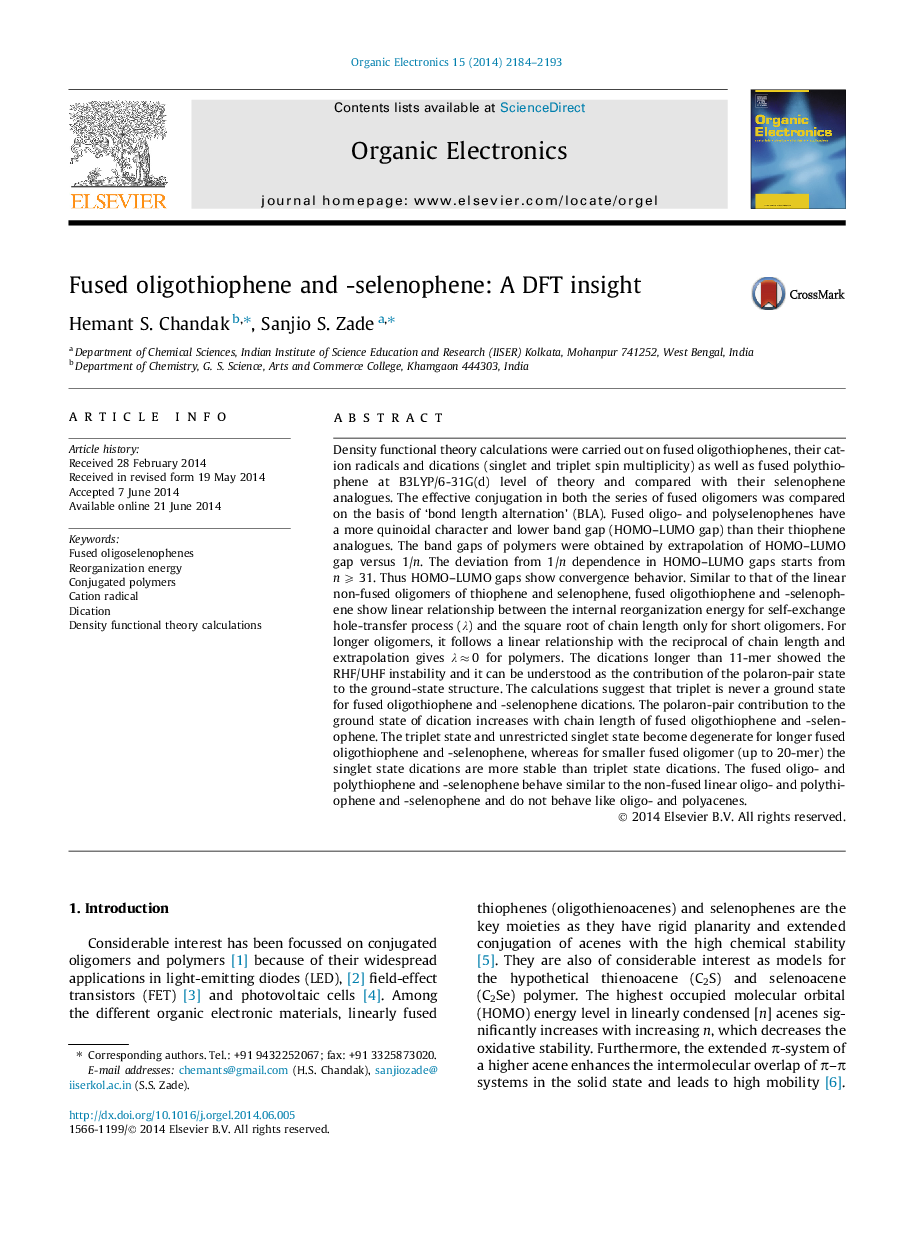| Article ID | Journal | Published Year | Pages | File Type |
|---|---|---|---|---|
| 1263751 | Organic Electronics | 2014 | 10 Pages |
•DFT calculations were carried out on fused oligothiophenes and -selenophene.•Fused oligoselenophenes have a more quinoidal character and lower HOMO–LUMO gaps.•The HOMO–LUMO gaps show convergence behavior.•The internal reorganization energy (λ) show a linear relationship with 1/n.•The fused oligothiophene and -selenophene behave like the non-fused linear analogues.
Density functional theory calculations were carried out on fused oligothiophenes, their cation radicals and dications (singlet and triplet spin multiplicity) as well as fused polythiophene at B3LYP/6-31G(d) level of theory and compared with their selenophene analogues. The effective conjugation in both the series of fused oligomers was compared on the basis of ‘bond length alternation’ (BLA). Fused oligo- and polyselenophenes have a more quinoidal character and lower band gap (HOMO–LUMO gap) than their thiophene analogues. The band gaps of polymers were obtained by extrapolation of HOMO–LUMO gap versus 1/n. The deviation from 1/n dependence in HOMO–LUMO gaps starts from n ⩾ 31. Thus HOMO–LUMO gaps show convergence behavior. Similar to that of the linear non-fused oligomers of thiophene and selenophene, fused oligothiophene and -selenophene show linear relationship between the internal reorganization energy for self-exchange hole-transfer process (λ) and the square root of chain length only for short oligomers. For longer oligomers, it follows a linear relationship with the reciprocal of chain length and extrapolation gives λ ≈ 0 for polymers. The dications longer than 11-mer showed the RHF/UHF instability and it can be understood as the contribution of the polaron-pair state to the ground-state structure. The calculations suggest that triplet is never a ground state for fused oligothiophene and -selenophene dications. The polaron-pair contribution to the ground state of dication increases with chain length of fused oligothiophene and -selenophene. The triplet state and unrestricted singlet state become degenerate for longer fused oligothiophene and -selenophene, whereas for smaller fused oligomer (up to 20-mer) the singlet state dications are more stable than triplet state dications. The fused oligo- and polythiophene and -selenophene behave similar to the non-fused linear oligo- and polythiophene and -selenophene and do not behave like oligo- and polyacenes.
Graphical abstractFigure optionsDownload full-size imageDownload as PowerPoint slide
